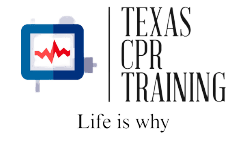
Cigarettes
Did you know that tobacco smoke contains more than 7,000 chemicals and is the number one risk factor for lung cancer.
Nicotine
Three of the most widely known chemicals are nicotine, tar, and carbon monoxide. Nicotine is a strong poisonous drug. It is the main ingredient in insecticides or bug sprays. In its pure form, just one drop on a person’s tongue would kill him/her.
Tar
Tar is the oily material which remains after tobacco passes through the filter. When a smoker inhales, a lot of the tar sticks to and blackens the lungs.
Carbon Monoxide
Carbon monoxide is a poisonous gas. A smoker inhales this gas which is also found in the exhaust of a car. This gas interferes with our respiratory (breathing) and circulatory (heart, arteries, and veins) systems. When we breathe in air through our nose and mouth, the air passes down the windpipe (trachea) and bronchial tubes into the lungs. The cilia which are made up of small hairs and mucous (a sticky fluid also found in the nose) help to clean this air as it moves down and into the lungs. The cilia remove small pieces of dirt, dust, and germs.
(Credit: Cancer of the Larynx, National Cancer Institute, NIH, 2/92)
Statistics about Cigarette Use
- Every day in 2014, on average, more than 2,600 youth under age 18 smoke their first cigarette and nearly 600 youth under age 18 become daily smokers.
- Nationwide in 2015, 9.3% (about 1.37 million) of high school students and 2.3% (an estimated 260,000) of middle school students reported smoking a cigarette in the past 30 days.
Damage
Because of the damage this damage increases your risk for:
- Atherosclerosis
- Aneurysms, which are bulging blood vessels that can burst and cause death
- Cardiovascular disease (CVD), which includes:
- Coronary Heart disease
- Peripheral arterial disease (PAD)
- Stroke
According to The American Lung Association it also can cause:
- Lung Cancer
- COPD (chronic obstructive pulmonary disease
- Heart Disease
- Stroke
- Asthma
- Reproductive Effects in Women
- Premature, Low Birth-Weight Babies
- Diabetes
- Blindness, Cataracts and Age-Related Macular Degeneration
- Over 10 Other Types of Cancer, Including Colon, Cervix, Liver, Stomach and Pancreatic Cancer
Quitting smoking is the single most important step a smoker can take to improve the length and quality of his or her life. Stopping smoking can be tough but smokers don’t have to quit alone. The American Lung Association is there to help!
- The American Lung Association Freedom From Smoking Program
For over 35 years, the American Lung Association has helped hundreds of thousands of people quit smoking. Available online, through group clinics and a self-help workbook, the program teaches the skills and techniques that have been proven to help smokers quit. - The American Lung Association Quitter’s Circle
With a robust online community, Quitter’s Circle is a smoking cessation initiative. Developed in collaboration between the American Lung Association and Pfizer, Quitter’s Circle allows users to personalize a quit plan and access resources to connect with a healthcare provider about quitting, and encourages a circle of friends and family to lend support and encouragement along the way.
